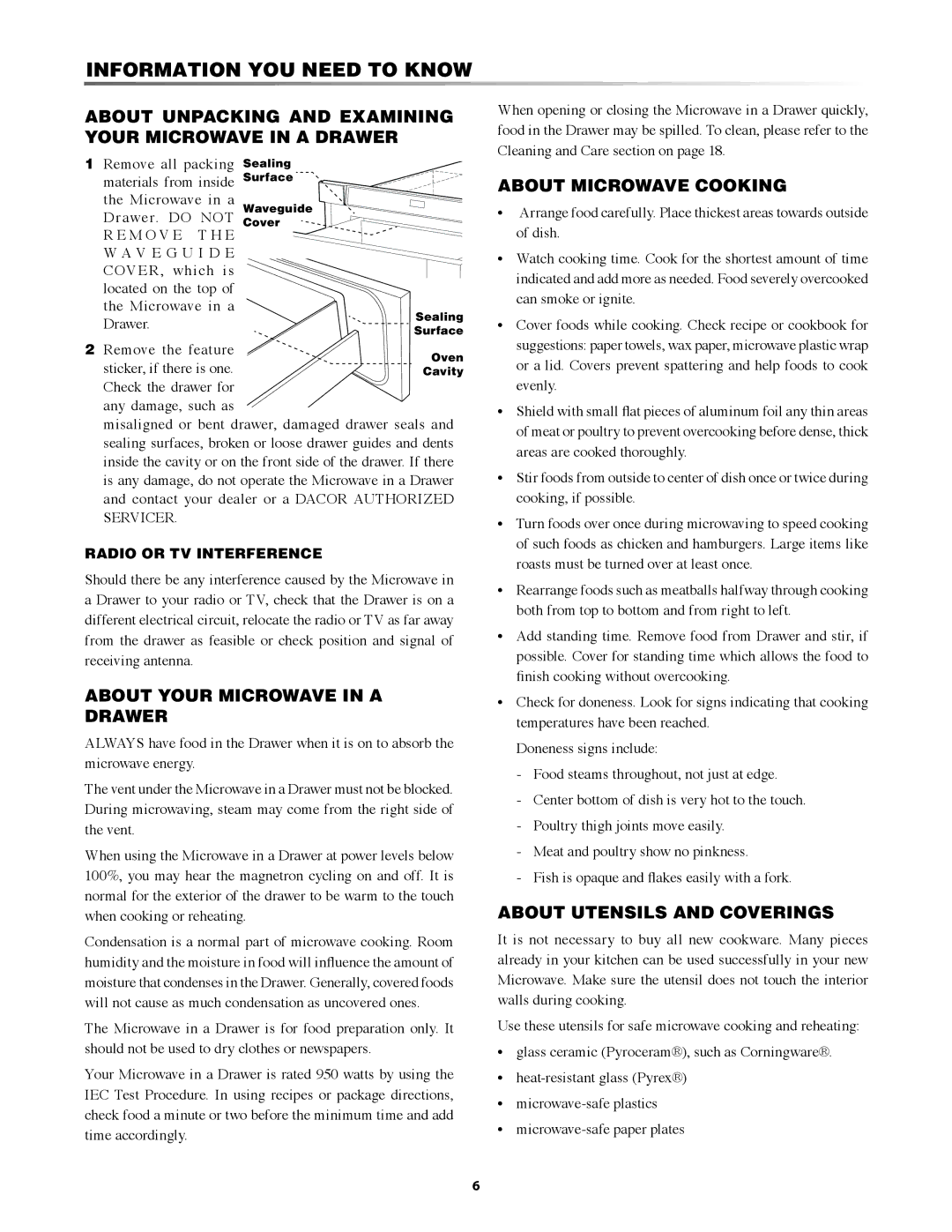MMDH30S, MMDV30S, PMD30 specifications
Dacor is a well-respected name in the world of luxury kitchen appliances, known for its blend of innovative technology and elegant design. Among their standout offerings are the PMD30, MMDV30S, and MMDH30S models, each bringing unique features and capabilities to elevate the culinary experience.The Dacor PMD30 is a powerful microwave drawer that combines convenience with high-end functionality. A standout feature is its innovative design that allows for easy access at waist level, promoting safety and comfort while cooking. The PMD30 offers a spacious interior, providing ample space for a variety of dishes and containers. One of its key technologies is the built-in sensor cooking, which detects moisture levels in food and adjusts cooking time and power accordingly. This ensures perfect results every time, eliminating the guesswork often associated with microwave cooking. Furthermore, the sleek stainless-steel exterior complements modern kitchen aesthetics.
Moving on to the MMDV30S, this model is a multi-function microwave that takes versatility to the next level. It combines several cooking methods, including microwave, convection, and grilling, allowing users to prepare a wide range of dishes with ease. Its convection feature circulates hot air around the food, promoting even cooking and browning, while the grilling element adds a deliciously charred finish. The MMDV30S also includes a user-friendly touch control panel, which simplifies programming and adds to the overall convenience of the appliance. The sleek design and customizable settings make it a valuable addition to any kitchen.
The MMDH30S, on the other hand, is a high-capacity microwave designed for those who need more from their kitchen appliance. Its extra-large interior can accommodate large dishes, making it perfect for families or those who frequently entertain guests. This model is equipped with advanced features such as smart controls and a programmable memory, allowing users to save their favorite cooking settings for quick access. The MMDH30S also showcases Dacor's commitment to quality, with a design that includes a seamless integration with existing cabinetry for a cohesive kitchen look.
In summary, the Dacor PMD30, MMDV30S, and MMDH30S represent a trio of microwave solutions that are not only functional but also stylish. With advanced technologies like sensor cooking, multi-function capabilities, and user-friendly controls, these appliances stand out in the realm of modern kitchens. Their elegant designs and robust features make them essential tools for both everyday cooking and elaborate meal preparations, reinforcing Dacor's reputation for excellence in the luxury appliance market.

